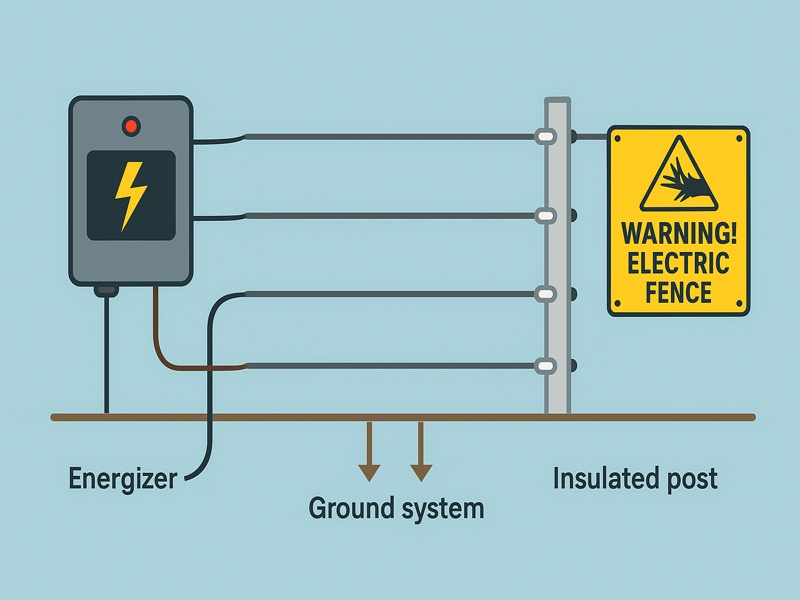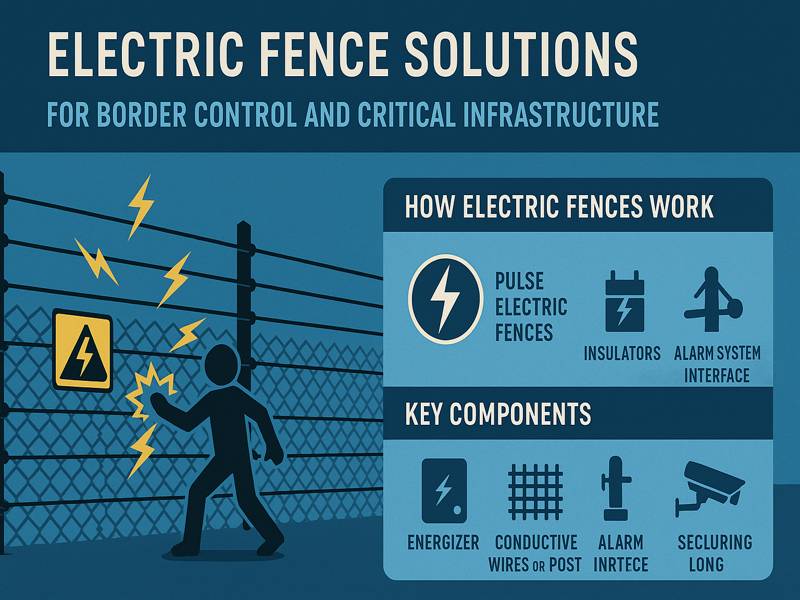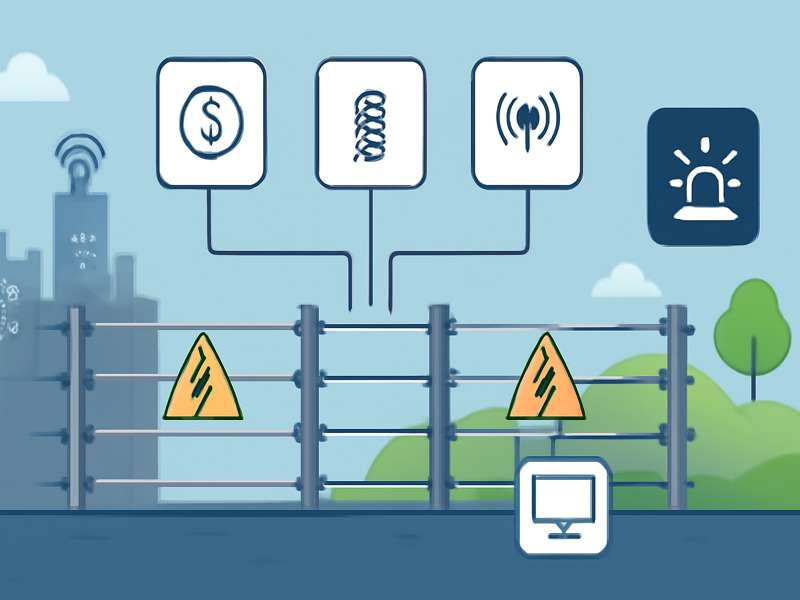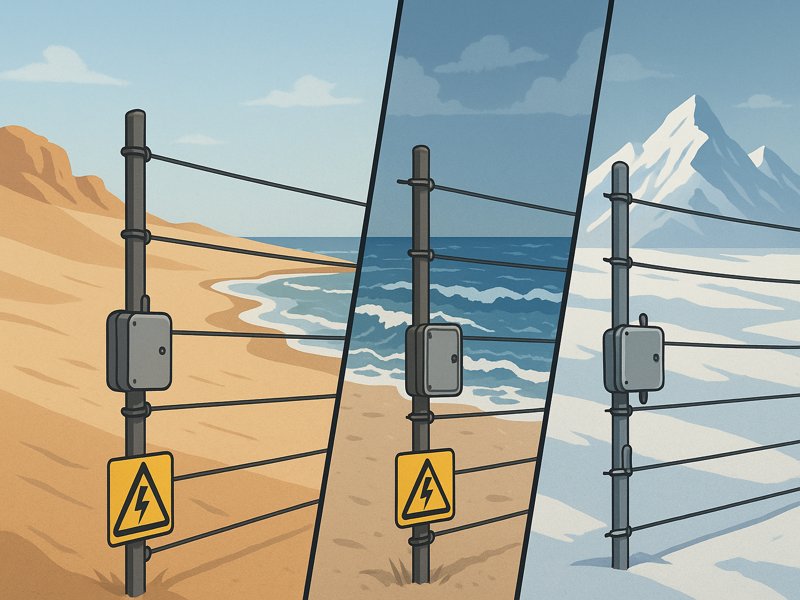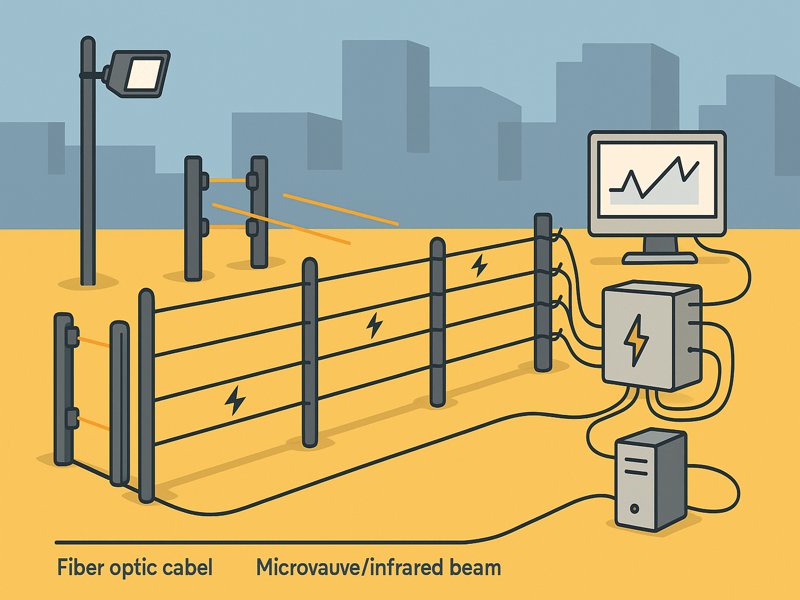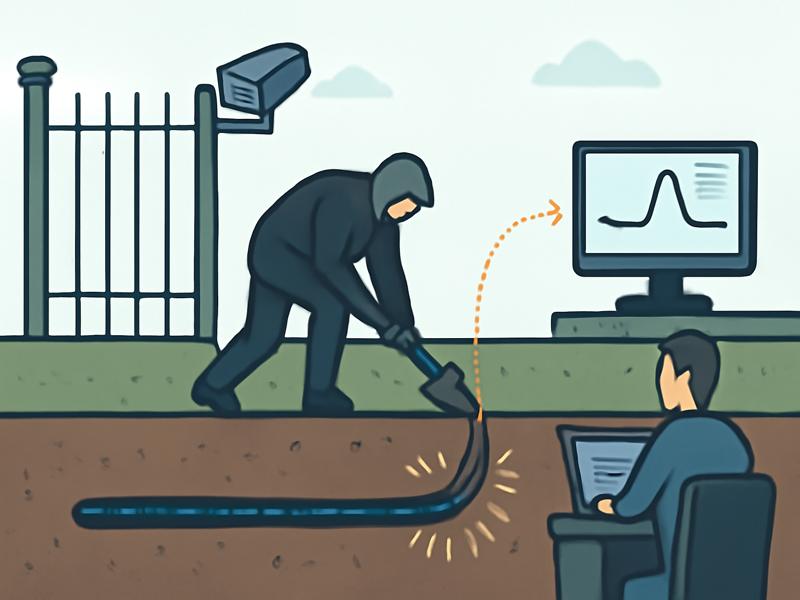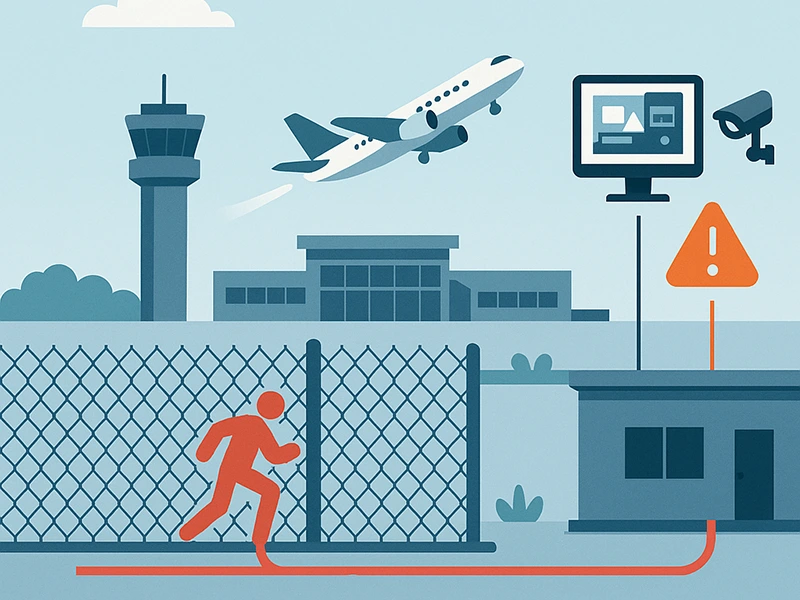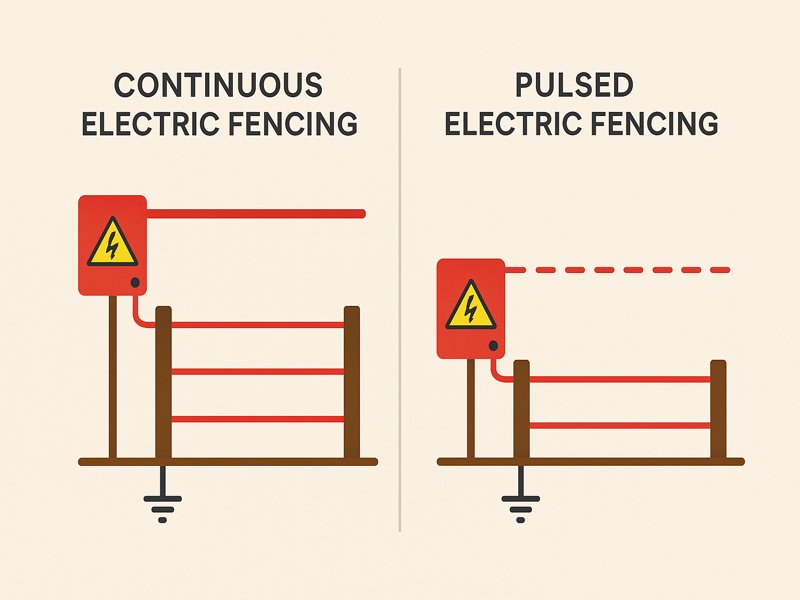For the protection of critical infrastructure, such as government buildings and military bases, perimeter intrusion detection systems, or PIDS, are essential. These systems detect unauthorized access using sensors such as infrared, laser, acoustic, and motion detection. However, environmental factors like rain, fog, and wildlife can significantly affect their accuracy.
Impact of Rain on PIDS Accuracy
Rain can have a direct impact on the performance of various PIDS sensors, including optical and acoustic detectors. When water droplets accumulate on the sensor lenses or interfere with signal transmission, PIDS may fail to detect or incorrectly identify intrusions.
Optical Sensors and Rain
Optical sensors, such as infrared (IR) and laser-based systems, rely on the transmission of light signals to detect intrusions. Rain, especially heavy rain, can interfere with these systems in several ways.
Water Droplets on Sensor Lenses: Water droplets on the sensor lens can scatter or absorb the light signal, reducing the sensor’s effectiveness. This can result in false negatives, where an intrusion is missed, or the system may fail to detect an object due to signal degradation.
Beam Obstruction: In laser and infrared-based systems, rain can scatter the light beams, causing them to deviate from their intended paths. This scattering effect weakens the strength of the signal returning to the sensor, resulting in detection failures or inaccurate readings.
False Alarms: In some cases, the presence of water droplets or rain on a sensor can cause the system to register false positives. The scattered light or reflections from the rainwater droplets can create spurious signals that are interpreted as intrusions.
Acoustic Sensors and Rain
Acoustic sensors are designed to detect sounds such as footsteps, cutting, or tampering with fences. Rainfall can affect the sensitivity and accuracy of acoustic sensors in the following ways:
- Background Noise: Rain creates a continuous noise, which can mask or drown out other sounds. This can make it difficult for acoustic sensors to distinguish between the sound of an intruder and the background noise generated by the rain. For instance, the sound of water hitting the ground or a surface can obscure the sound of footsteps or movement near the perimeter.
- Sound Absorption: Rainwater absorbs sound waves, which can reduce the range of acoustic sensors. This means that intruders who are farther away from the sensor might not be detected due to the decreased signal range.
Mitigating the Impact of Rain
Table 1 outlines common strategies to mitigate the effects of rain on PIDS:
| Mitigation Strategy | Description | Effectiveness |
| Weatherproofing Sensors | Use of covers or housings to protect sensors from direct rain exposure. | High |
| Sensitivity Adjustment | Calibration of sensor sensitivity to account for environmental factors like rain. | Moderate |
| Data Fusion | Combining data from multiple sensor types (e.g., infrared and acoustic) to reduce the chance of false alarms. | High |
| Sensor Cleaning Systems | Automated or manual cleaning of optical lenses to remove water droplets and debris. | High |
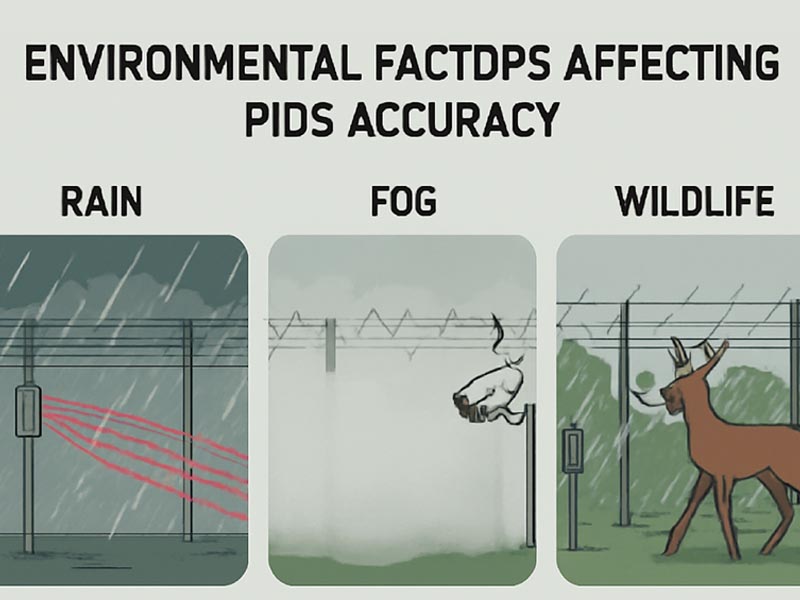
Impact of Fog on PIDS Accuracy
Fog can be a particularly challenging environmental factor for PIDS that rely on optical and visual sensors. Dense fog reduces visibility by scattering light, which can degrade the performance of both infrared and camera-based systems.
Infrared and Laser Sensors in Fog
Infrared and laser-based systems are sensitive to the scattering of light caused by fog, which contains tiny water droplets suspended in the air. These droplets scatter light waves in all directions, leading to signal degradation. This can result in:
- Signal Attenuation: As light signals are scattered in the fog, the amount of light that returns to the sensor is reduced, leading to weaker signal strength. This attenuation can cause detection failures or inaccurate readings.
- Missed Intrusions: In foggy conditions, the sensor may fail to detect an intruder because the scattered light is insufficient for the system to register an object. For systems that rely on accurate signal measurements to establish location and movement, this can be very problematic.
Camera Systems and Fog
Cameras used in PIDS, especially those relying on visible light, are also affected by fog. The camera’s sharpness and range are diminished by the fog, making it challenging to take sharp pictures.
- Reduced Range: In foggy conditions, cameras may only be able to detect objects at very close range. The reduced range decreases the system’s effectiveness, particularly in large perimeters where long-range detection is critical.
- Blurring and Obscuration: Cameras are prone to blurring due to the diffused light in fog. This can obscure the view of objects, making it challenging to identify intruders or distinguish between a legitimate threat and environmental factors.
Mitigating the Impact of Fog
Table 2 provides mitigation strategies for overcoming the challenges posed by fog:
| Mitigation Strategy | Description | Effectiveness |
| Thermal Imaging Cameras | Use of thermal cameras to detect heat signatures, which are less affected by fog than visible light. | High |
| Fog Penetrating Infrared | Specialized infrared sensors are designed to penetrate fog and detect intrusions at longer distances. | High |
| Enhanced Calibration | Adjusting sensor calibration for optimal performance in foggy conditions. | Moderate |
| Data Fusion | Integrating optical, infrared, and thermal data to produce a detection system that is more dependable. | High |
Impact of Wildlife on PIDS Accuracy
Wildlife can significantly impact the performance of PIDS, particularly in rural or natural settings. Animals, including birds, small mammals, and larger creatures, can trigger false alarms or lead to missed detections.
Animals and Motion Detection
The purpose of motion detection sensors is to identify movement in a designated region. However, animals moving along or across the perimeter can easily trigger these sensors, leading to false alarms.
- Small Animals: Small mammals, such as rodents or birds, can trigger motion detectors, especially those with low sensitivity or wide detection areas. These small movements may be interpreted as intrusions, resulting in unnecessary alarms.
- Large Animals: Larger animals, such as deer, can also trigger more advanced motion sensors designed to detect human-sized movements. This can cause false positives in areas where large animals frequently move.
Acoustic Detection and Wildlife Sound
Acoustic sensors are particularly sensitive to sound, but wildlife can produce noises similar to those caused by intruders. This can make it difficult for the system to differentiate between natural and suspicious sounds.
- Animal Vocalizations: The sounds made by birds, mammals, and other wildlife can sometimes resemble the sounds of human activity or machinery, leading to false positives.
- Other Animal Sounds: Animals running, scratching, or interacting with the fence can also generate sounds that are mistaken for intrusion-related activity.
Mitigating the Impact of Wildlife
Table 3 outlines potential strategies for minimizing the impact of wildlife on PIDS:
| Mitigation Strategy | Description | Effectiveness |
| Motion Filtering Algorithms | Use advanced algorithms to filter out small, non-human movements and reduce false alarms. | High |
| Sound Filtering | Acoustic sensors equipped with filters to distinguish between human and animal sounds. | High |
| Wildlife Deterrents | Installing wildlife deterrents such as fencing or visual barriers to prevent animals from crossing. | Moderate |
| Sensitivity Adjustment | Adjusting the sensitivity of motion and acoustic sensors to reduce the chance of animal-triggered alarms. | Moderate |
Our PIDS are designed to operate effectively and continuously even in the most challenging environmental conditions. Continuous development of applied technologies and strategies will ensure that PIDS remains a reliable component of modern security infrastructure, even in the face of environmental challenges.

